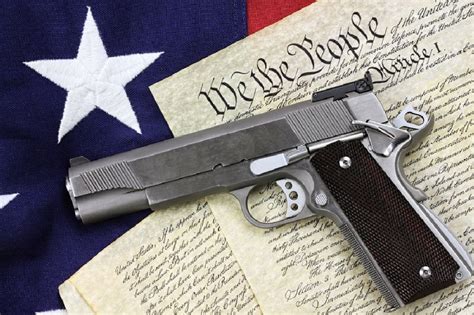By Matthew Vadum
Justice Thomas: law violates Constitution by preventing law-abiding citizens from defending themselves in public

The Supreme Court voted 6–3 on June 23 to strike down New York state’s draconian concealed-carry gun permitting system on constitutional grounds.
The Supreme Court has been strengthening Second Amendment protections in recent years and observers have said the court’s 6–3 conservative supermajority could help expand gun ownership protections. In District of Columbia v. Heller (2008), the Supreme Court held that the Second Amendment protects “the individual right to possess and carry weapons in case of confrontation,” and in McDonald v. City of Chicago (2010), it held that this right “is fully applicable to the States.”
The ruling comes amid rising crime rates, activist demands to defund police departments, and a Biden administration push to strengthen gun control policies. A gun control package, introduced in the wake of a series of high-profile mass shootings, is moving forward in Congress.
The Empire State’s gun permit law, like laws in seven other states, generally requires an applicant to demonstrate “proper cause” in order to obtain a license to carry a concealed handgun in public.
New York makes it a crime to possess a firearm without a license, whether inside or outside the home. An individual who wants to carry a firearm outside his home may obtain an unrestricted license to “have and carry” a concealed “pistol or revolver” if he can prove that “proper cause exists” for doing so, according to state law. An applicant satisfies the “proper cause” requirement only if he can “demonstrate a special need for self-protection distinguishable from that of the general community,” according to a 1980 ruling by the Supreme Court of New York in Klenosky v. New York City Police Department.
The specific issue before the court was whether the state’s denial of the petitioning individuals’ applications for concealed-carry licenses for self-defense violates the U.S. Constitution.
Oral arguments in the case, New York State Rifle and Pistol Association v. Bruen, court file 20-843, an appeal from the U.S. Court of Appeals for the 2nd Circuit, were heard Nov. 3.
Respondent Kevin Bruen heads the New York State Police. Founded in 1871, the lead petitioner, the New York State Rifle and Pistol Association, describes itself as “the state’s largest and nation’s oldest firearms advocacy organization,” and as the official National Rifle Association (NRA) affiliated state association in New York.
The new opinion (pdf) was written by Justice Clarence Thomas, who declared that New York’s proper-cause requirement violates the Fourteenth Amendment by preventing law-abiding citizens with ordinary self-defense needs from exercising their Second Amendment right to keep and bear arms in public for self-defense.
“Because the State of New York issues public-carry licenses only when an applicant demonstrates a special need for self-defense, we conclude that the State’s licensing regime violates the Constitution,” Thomas wrote.
“In keeping with Heller, we hold that when the Second Amendment’s plain text covers an individual’s conduct, the Constitution presumptively protects that conduct. To justify its regulation, the government may not simply posit that the regulation promotes an important interest. Rather, the government must demonstrate that the regulation is consistent with this Nation’s historical tradition of firearm regulation. Only if a firearm regulation is consistent with this Nation’s historical tradition may a court conclude that the individual’s conduct falls outside the Second Amendment’s ‘unqualified command,’” Thomas wrote, quoting Konigsberg v. State Bar of California (1961).
Justice Stephen Breyer wrote a dissenting opinion, which Justices Sonia Sotomayor and Elena Kagan joined.
“In 2020, 45,222 Americans were killed by firearms. Since the start of this year (2022), there have been 277 reported mass shootings—an average of more than one per day. Gun violence has now surpassed motor vehicle crashes as the leading cause of death among children and adolescents. Many States have tried to address some of the dangers of gun violence just described by passing laws that limit, in various ways, who may purchase, carry, or use firearms of different kinds. The Court today severely burdens States’ efforts to do so.”

